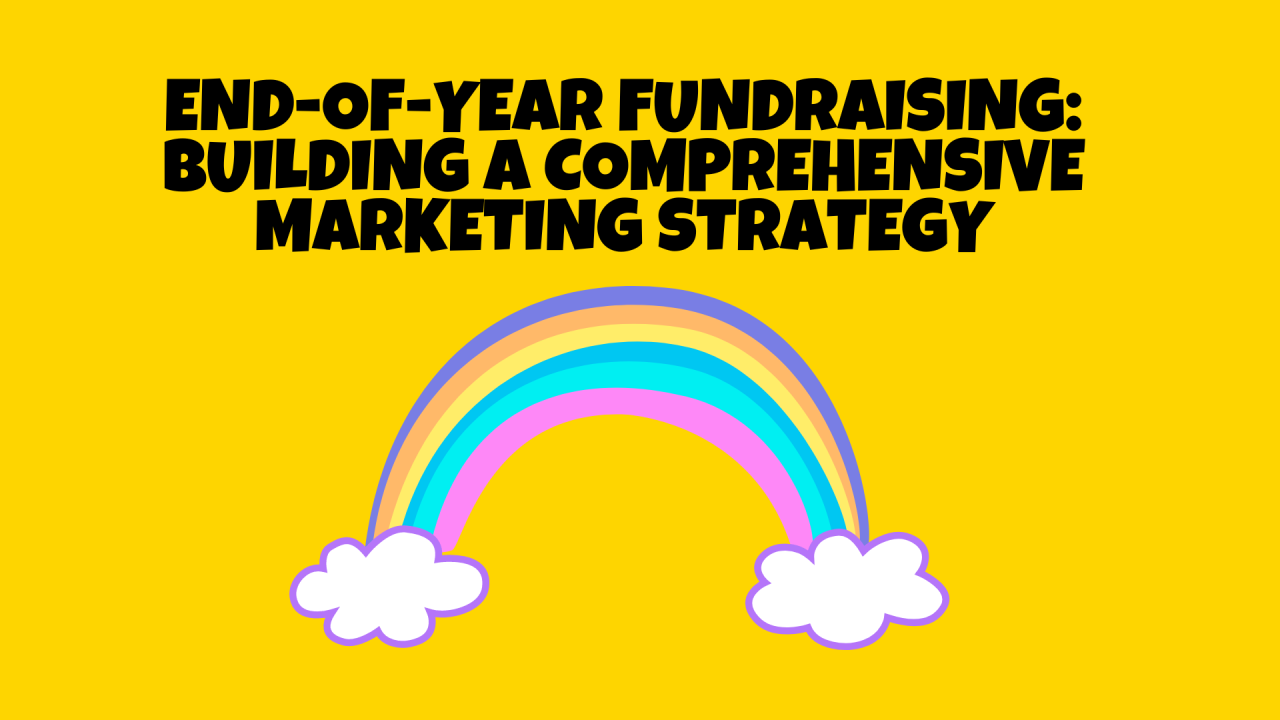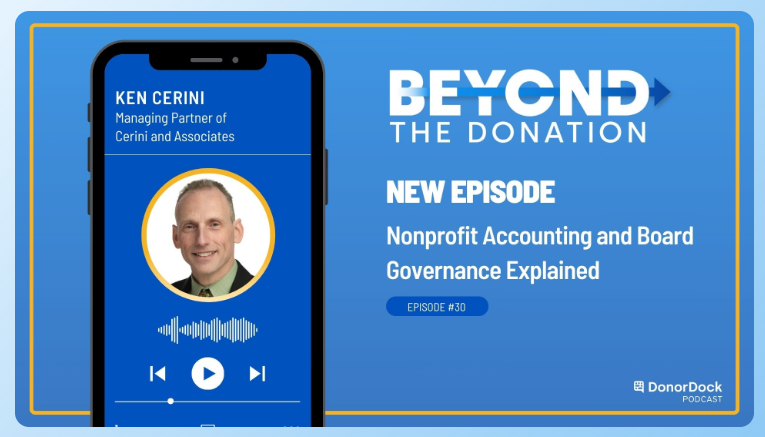Groove With Me dancers surprise Hoda for her birthday
looking for advisory board members
Blessings in a Backpack is expanding its mission to feed food-insecure children across Suffolk and Nassau counties. It is looking for advisory board members who do development and fundraising work. Call John at 516-356-2934
Continue readingSafeguarding Nonprofits: The Importance of Cybersecurity Basics
In 2023, a well-known nonprofit organization dedicated to providing clean water to underserved communities fell victim to a cyberattack. This attack resulted in a significant data breach, exposing sensitive donor information and severely disrupting their operations. This incident highlights a growing concern for many nonprofits: the importance of understanding and implementing cybersecurity basics. Nonprofit organizations, often perceived as easy targets due to limited resources, have a need to prioritize cybersecurity to protect their missions and the communities they serve.
Understanding the Cybersecurity Landscape
Nonprofits face a variety of cyber threats, including phishing, ransomware, and data breaches. Phishing attacks often involve fraudulent emails designed to trick employees into revealing personal information or downloading malicious software. Ransomware, on the other hand, involves encrypting the organization’s data and demanding payment for its release. Data breaches can result in the unauthorized access and theft of sensitive information, such as donor details and financial records.
Cybercriminals often target nonprofits because they collect and store valuable data, including donor information, financial records, and personal details of beneficiaries. Additionally, nonprofits may be perceived as having weaker cybersecurity measures compared to for-profit organizations. Limited budgets, lack of cybersecurity expertise, and the primary focus on their mission rather than IT infrastructure make nonprofits attractive targets for cyberattacks.
The consequences of cyberattacks on nonprofits can be devastating. Financial loss from ransomware payments, legal fees, and the cost of remediation can strain already limited resources. Reputational damage can erode donor trust and result in decreased donations. Operational disruption can hinder the nonprofit’s ability to deliver services, affecting the communities they serve. In severe cases, the nonprofit’s very existence can be threatened.
Key Cybersecurity Fundamentals
One of the simplest yet most effective cybersecurity measures is the use of strong, unique passwords. Encourage staff and volunteers to create complex passwords that combine letters, numbers, and special characters. Implement multi-factor authentication (MFA) to add an extra layer of security. MFA requires users to verify their identity through a secondary method, such as a text message or authentication app, reducing the risk of unauthorized access.
Keeping software and systems up-to-date is crucial in protecting against vulnerabilities. Cybercriminals often exploit outdated software to gain access to networks and data. Nonprofits should establish a routine schedule for software updates and patches to ensure all systems are secure. This includes operating systems, applications, and any third-party software used by the organization.
Data encryption is a vital cybersecurity practice that protects sensitive information both in transit and at rest. By encrypting data, nonprofits can ensure that even if data is intercepted or accessed without authorization, it remains unreadable and secure. Implement encryption protocols for email communications, data storage, and any online transactions involving sensitive information.
Regularly backing up data and having a robust recovery plan in place is essential for minimizing the impact of cyber incidents. Backups should be performed frequently and stored securely, preferably offsite or in the cloud. In the event of a cyberattack, a well-documented recovery plan can help restore data and resume operations quickly, reducing downtime and financial loss.
Implementing comprehensive network security measures can protect against unauthorized access and cyber threats. This includes using firewalls to monitor and control incoming and outgoing network traffic, installing antivirus software to detect and remove malware, and configuring networks securely to prevent unauthorized access. Regular network assessments can identify and address potential vulnerabilities.
Building a Cybersecurity Culture
Educating staff and volunteers about cybersecurity best practices is crucial in creating a security-conscious culture. Conduct regular training sessions to raise awareness about common cyber threats, such as phishing and social engineering attacks. Provide guidelines on how to recognize suspicious activities and respond appropriately. Empowering employees with knowledge can significantly reduce the risk of human error leading to cyber incidents.
Developing clear cybersecurity policies and procedures provides a framework for handling sensitive information and responding to cyber incidents. These policies should outline acceptable use of technology, data protection measures, and incident response protocols. Ensure that all staff and volunteers are familiar with these policies and understand their roles in maintaining cybersecurity.
Leadership plays a crucial role in prioritizing cybersecurity within the organization. Encourage leadership to lead by example and emphasize the importance of cybersecurity in achieving the nonprofit’s mission. Hold everyone accountable for following best practices and policies. Appoint a cybersecurity champion or team responsible for overseeing and implementing cybersecurity initiatives.
Resources and Support for Nonprofits
Nonprofits can leverage external support and partnerships to enhance their cybersecurity posture. Managed IT services and cybersecurity consultants can provide expertise and resources that may not be available in-house. Partnering with other organizations and participating in cybersecurity networks can offer valuable insights and collaboration opportunities.
Many free and low-cost cybersecurity tools and resources are available to nonprofits. These include antivirus software, encryption tools, and online training modules. Organizations such as TechSoup offer discounted technology products and services specifically for nonprofits. Taking advantage of these resources can help strengthen cybersecurity without straining budgets.
Cybersecurity is an ever-evolving field, with new threats and vulnerabilities emerging regularly. Nonprofits should stay informed about the latest cybersecurity news and trends by subscribing to industry newsletters, attending webinars, and participating in cybersecurity forums. Staying up-to-date ensures that the organization is prepared to address new challenges effectively.
Conclusion
In an increasingly digital world, understanding and implementing cybersecurity basics is essential for the safety and success of nonprofit organizations. By recognizing common cyber threats, adopting key cybersecurity practices, building a culture of security, and leveraging available resources, nonprofits can safeguard their missions and the communities they serve. Now is the time for nonprofits to assess their current cybersecurity practices and take proactive steps to enhance their security posture. Ensuring robust cybersecurity is not just about protecting data—it’s about protecting the future of the organization and the impact it strives to make.
End-of-Year Fundraising: Building a Comprehensive Marketing Strategy
The year is winding down, and for nonprofits, this means one thing: end-of-year fundraising. To maximize your impact, it’s crucial to have a well-rounded marketing strategy in place. Let’s dive into key components to consider.
Understanding Your Audience
- Identify your donor segments: Not all donors are created equal. Understanding their motivations, giving patterns, and communication preferences is vital.
- Tailor your messaging: Craft compelling narratives that resonate with each segment. Personalize your appeals to maximize impact.
Building a Strong Foundation
- Clarify your mission: Ensure your mission is clear and inspiring. It’s the cornerstone of your messaging.
- Develop compelling stories: Human stories are powerful. Highlight the impact of your work through real-life examples.
- Leverage data: Analyze past performance to identify trends and optimize your strategy.
Crafting a Multi-Channel Approach
- Email marketing: Nurture donor relationships through targeted email campaigns.
- Social media: Engage your audience on platforms they love. Use visuals, storytelling, and interactive content.
- Direct mail: While traditional, direct mail can be highly effective when combined with digital efforts.
- Peer-to-peer fundraising: Empower supporters to fundraise on your behalf, expanding your reach.
Creating Urgency and Gratitude
- Set clear goals: Establish ambitious yet achievable fundraising targets.
- Create a sense of urgency: Highlight the impact of donations before the year-end deadline.
- Express sincere gratitude: Thank donors for their support and recognize their impact.
Measuring and Optimizing
- Track key metrics: Monitor website traffic, open rates, click-through rates, and conversion rates.
- Analyze performance: Identify what’s working and what’s not.
- Iterate and improve: Continuously refine your strategy based on data insights.
So what’s your plan?
A successful end-of-year campaign requires careful planning and execution. By understanding your audience, crafting compelling narratives, and utilizing a multi-channel approach, you can maximize your fundraising efforts and create a lasting impact.
Grab a free strategy call with me today and let’s figure out how we can work smarter, not harder to elevate your community and accelerate your marketing.
Beyond the Donation: Nonprofit Accounting and Board Governance Explained, an interview with Ken Cerini
WATCH A CLIP OF THE EPISODE ABOVE!
In this episode of Beyond the Donation, managing partner Ken Cerini of accounting firm Cerini and Associates discusses strategies for better fiscal management and the roles of board members in a strong nonprofit.
Ken stresses the importance of implementing effective financial controls, maintaining open communication between board members and management, and conducting regular board meetings. He also emphasizes the significance of accurate budgeting based on monthly variations rather than a divided annual budget.
Ken provides insights on potential minor tax exemptions and the risk of nonprofits losing their tax exemption status if not careful. He further explains the nuances and implications of the 501 (c)(3) tax exemption. Additionally, he shares advice to smaller organizations on attracting board members and adapting to changing technology trends for more effective accounting and record keeping.

Kenneth R. Cerini, CPA, CFP, FABFA
Managing Partner
Ken is the Managing Partner of Cerini & Associates, LLP and is the executive responsible for the administration of our not-for-profit and educational provider practice groups. In addition to his extensive audit experience, Ken has been directly involved in providing consulting services for nonprofits and educational facilities of all sizes throughout New York State in such areas as cost reporting, financial analysis, Medicaid compliance, government audit representation, rate maximization, board training, budgeting and forecasting, and more.
Paylocity Earns Great Place To Work Certification
Continuing its streak, Paylocity recognized as a Great Place To Work in 2024.
Paylocity is proud to announce it has earned the prestigious Great Place To Work Certification for the 7th consecutive year in 2024. This recognition is a testament to Paylocity’s commitment to fostering an exceptional workplace culture where employees can thrive.
“Creating a workplace where our employees feel valued and supported is a core part of our mission and a key component of delivering superb service to our clients,” said Jill Morrison, CHRO of Paylocity. “Achieving the Great Place To Work Certification again is an honor and reflects our ongoing dedication to our people. As we continue to grow, maintaining a positive and inclusive culture remains one of our top priorities.”
The Great Place To Work Certification evaluates workplace culture using the Trust Index Survey and the Great Place To Work Trust Model. These tools provide a comprehensive picture of an organization’s internal health from the perspective of its employees. To earn the certification, companies must demonstrate that approximately 7 out of 10 employees have a consistently positive experience at work.
“Receiving the Great Place To Work Certification is especially significant as it highlights the positive experiences of our employees,” said Jill Morrison. “As an HR leader at an HCM company, it’s even more meaningful because I know my company walks the talk in how it supports my HR colleagues across the industry.”
Paylocity’s achievement of the Great Place To Work Certification adds to its growing list of accolades. Recent recognitions include Fortune Forbes’ Best Employers for Women, Best Employers for Diversity, and Newsweek’s America’s Greatest Workplaces for Diversity honor.
As part of its ongoing commitment to employee well-being, Paylocity invests in comprehensive health and wellness programs, professional development opportunities, tuition assistance, and competitive financial benefits. These efforts underscore Paylocity’s dedication to creating a supportive and inclusive workplace for all its employees.
Learn more about career opportunities at Paylocity and how the company continues to build an amazing company culture.
Unlocking Benefits: Strategies for Renewal and Enrollment Season
Dive into the heart of benefits season with “Unlocking Benefits: Strategies for Renewal and Enrollment Season.

Dive into the heart of benefits season with “Unlocking Benefits: Strategies for Renewal and Enrollment Season.” This essential webinar is crafted for HR professionals aiming to navigate the complexities of benefits renewal and open enrollment with confidence and finesse. From dissecting the latest trends in employee benefits to mastering the dialogue with benefits brokers and exploring innovative benefits that won’t break the bank, we’ll cover everything you need to transform this challenging season into an opportunity for organizational growth and employee satisfaction. Whether you’re a seasoned pro or new to the benefits arena, join us to unlock the strategies that will lead you and your employees to a successful enrollment season.
Key Objectives:
- Demystify the Benefits Renewal Process: Gain a clear understanding of the benefits renewal cycle, including how to evaluate current offerings against employee needs and market trends to make informed decisions.
- Master Open Enrollment: Learn effective communication strategies and engagement techniques to ensure a smooth enrollment process that maximizes employee participation and satisfaction.
- Innovate Within Budget: Discover creative, cost-effective benefits solutions that enhance employee value without escalating costs, including leveraging low-cost or no-cost benefits to compete in today’s job market.
This session qualifies for one HRCI and SHRM recertification credit.
Shari Simpson
Senior Manager Thought Leadership
Paylocity
Krystina Lesiak
HR Benefits Manager
Paylocity











